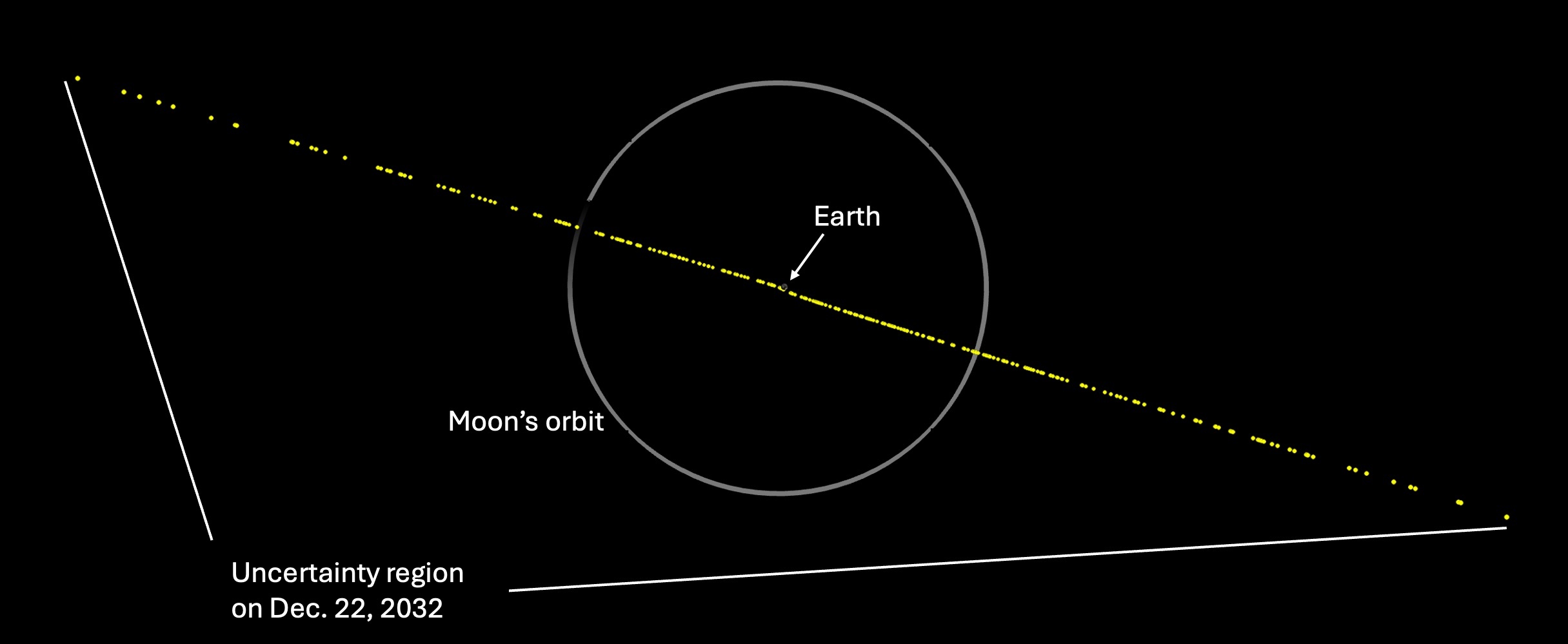11.02.2025
Astronomers are enlisting the help of NASA's James Webb Space Telescope to study an asteroid that has a small chance of striking Earth less than eight years from now. Characterized as a potential "city-killer," the asteroid was first detected in December and its odds of impacting our planet have increased slightly since then, according to the European Space Agency.
The space rock is formally named 2024 YR4. Scientists say it currently carries a 2% risk of making contact with Earth when it eventually reaches this part of the solar system on Dec. 22, 2032. Although the asteroid will most likely pass by without issue, those tasked with monitoring its physical attributes and potential have shifted upward the probability of a crash since 2024 YR4 was initially discovered.
The European Space Agency in January placed the asteroid's odds of hitting Earth at roughly 1%, before NASA's Jet Propulsion Laboratory estimated the risk was more like 1.6% at the tail end of the month. Officials at both agencies acknowledge the unlikelihood of 2024 YR4 causing problems, with the ESA saying that current risk estimates are probably unnecessarily high because the people studying it are still uncertain about some of the asteroid's key features.
Right now, astronomers estimate the asteroid is between 40 meters and 90 meters wide, which is roughly 130 to 295 feet wide. For reference, an American football field measures 100 yards — or 300 feet — long.
"It is very important that we improve our size estimate for 2024 YR4," the ESA said in a statement Monday, which noted "the hazard represented by a 40 m asteroid is very different from that of a 90 m asteroid."
On the slim chance the asteroid does strike Earth in 2032, its impacts would be localized. But 2024 YR4 has nonetheless received a Level 3 rating, out of 10, on the Torino Impact Hazard Scale, which is a fairly rare distinction meant to represent "a close encounter" that warrants public and scientific attention.

"An asteroid this size impacts Earth on average every few thousand years and could cause severe damage to a local region," the ESA said a previous statement about 2024 YR4.
If the asteroid does hit the planet, NASA said its potential impact sites could include areas over the eastern Pacific Ocean, northern South America, the Atlantic Ocean, Africa, the Arabian Sea and South Asia.
CBS News space consultant Bill Harwood said if it landed in a populated area, it would "be truly catastrophic," but the effects would be localized.
"It wouldn't be something like the rock that killed the dinosaurs," Harwood said. "It wouldn't affect the global climate, but it would certainly be a disaster of every proportion. So we're all hoping that doesn't happen."
In order to gain a greater understanding of the asteroid and better prepare for whatever is to come, astronomers will use the Webb Telescope to collect data on its size that could not be observed as accurately without the telescope's technology, the ESA said.
Where scientists are generally limited to observing the asteroid based on the amount of visible light it reflects from the sun, with brighter light typically signaling a larger asteroid, the Webb telescope can calculate its infrared emissions, allowing for more accurate estimates.
Webb will begin studying the asteroid in March, when it appears brightest, and again in May, according to the ESA. 2024 YR4 will disappear from view for a while after that, and astronomers will take time to interpret the telescope's data and determine what it could mean for the asteroid's route before it shows itself again in 2028.
Quelle: CBS News
